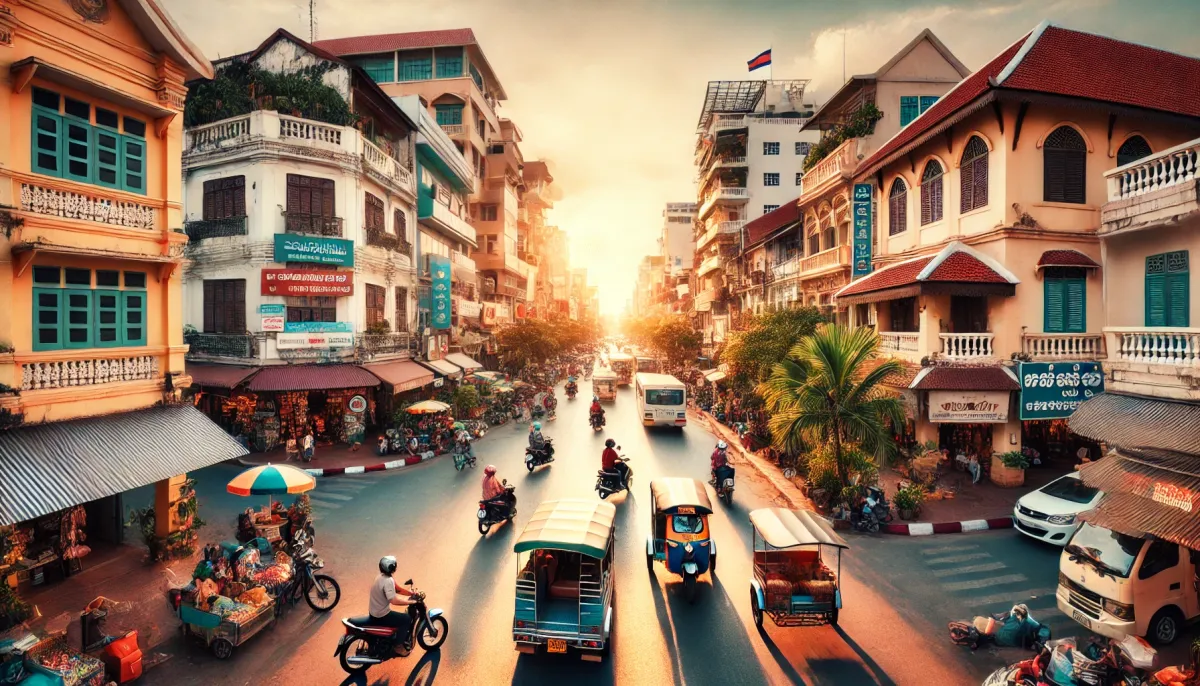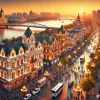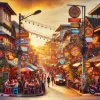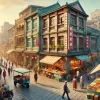Hey everyone, Mark here! I'm a seasoned backpacker from the US, and my latest adventure took me to the vibrant, chaotic, and sometimes unsettling streets of Phnom Penh, Cambodia. I'm here to share my experience, offering a glimpse into the duality of this captivating city – a place where ancient wonders meet modern anxieties. If you're an English speaker considering an Asian adventure, read on!
A City of Contrasts: Beauty and Danger
Phnom Penh immediately presented a stark contrast: breathtaking historical sites juxtaposed with a palpable sense of unease. From the moment I arrived, I was warned about petty theft. My driver, a local who’d been working for a year, recounted losing five phones to motorbike bandits, and regularly having bags snatched. The hotel reinforced these warnings, advising against openly displaying cameras – apparently, a surefire way to attract thieves. This significantly impacted my filming style, requiring extra caution at every turn. A friend even had their camera stolen just a month before my visit.
This pervasive fear is palpable. Security guards are everywhere, a constant presence in hotels, restaurants, and even smaller shops. Banks, understandably, are heavily guarded. In fact, the security at the ABA bank I visited wouldn't even let me film inside!
Beyond the Shadows: Phnom Penh's Rich History
While Phnom Penh presents security concerns, its historical richness is undeniable. The Royal Palace, the heart of Cambodia's power, glitters under the sun, a breathtaking display of opulence and intricate detail. The sheer number of treasures housed within its walls is staggering.
The Cost of Living and the Power of Language
I learned that the average Cambodian salary in Phnom Penh is around $200 USD (less than ¥2000 RMB), a surprisingly low amount. However, the demand for Mandarin Chinese speakers is significant, with salaries doubling or even tripling for those who possess these skills – some earning as much as $1000 USD. This highlights the influence of the Chinese language in the Cambodian job market.
Here’s a quick breakdown of what I learned:
| Income Source | Average Monthly Salary (USD) |
|---|---|
| General Worker | ~$200 |
| Mandarin Speaker | ~$400 - $1000 |
A Glimpse into Daily Life: Markets and Nightlife
Exploring the city, I wandered through bustling markets – chaotic yet vibrant – experiencing the true pulse of daily life. Later, I settled onto a mat at the Phnom Penh night market, savoring delicious Khmer cuisine. It was an incredible experience.
The Kindness of Strangers: A Balancing Act
Despite the security concerns, the kindness of the Phnom Penh people was striking. At intersections lacking traffic lights, drivers consistently yielded to pedestrians, and smiles were commonplace. This heartwarming aspect of the city created a surprising balance against the ever-present anxiety.
Security Concerns: A Conversation with My Driver
I had a concerning conversation with my driver:
Me: "Are there really so many people stealing phones here?"
Driver: "Yes, many people steal bags and phones. I've had several phones stolen. They just grab it and run. I've lost five phones!"
Me: "And bags too?"
Driver: "My bags are always crossbody; I can't leave them anywhere. It's too easy to get them stolen. I told you to hold your belongings tight!"
This further emphasized the precautions necessary.
Navigating Phnom Penh: A Safety First Approach
The safety situation significantly impacted my daily navigation. We meticulously planned our routes beforehand in the relative safety of the hotel. When needed to check our location, we only did so in secure areas. Continuously checking a map on the street was simply too dangerous.
A Brief History of Cambodia
To better understand the context of my experience, I took time to learn about Cambodia's history. Most research suggests its founding in the 1st century CE, preceded by a pre-historic era. Ancient Cambodian history can be broadly divided into three periods:
- Funan Kingdom (1st - 7th centuries CE): Established the first great empire in Southeast Asia, stretching from the South China Sea to the Bay of Bengal and into northern Malaya.
- Chenla Kingdom (7th - 16th centuries CE): A thousand-year reign, further divided into Early Chenla and the Angkor period, representing the kingdom's rise, prosperity, and eventual decline. The Angkor period, lasting over 600 years, was a golden age for the Khmer Empire. We will be visiting Angkor Wat soon, so I'll share more then!
- Kingdom of Cambodia (16th - 19th centuries CE): A period of gradual weakening, leading to subjugation under Vietnam and Siam (present-day Thailand).
Modern Cambodian history, including French colonization, independence under Norodom Sihanouk, the Khmer Rouge regime, and the eventual restoration of the monarchy, is also crucial to understanding the country's current state.
Phnom Penh's Landmarks: Independence Monument and Wat Phnom
The Independence Monument, a prominent landmark in the city center, stands as a symbol of Cambodia's journey. I found that even approaching it was a challenge due to the lack of pedestrian access, highlighting another aspect of the city's design. The monument’s five-tiered structure reflects the significance of the number five in Khmer culture.
Wat Phnom, another significant landmark, holds a legend forming Phnom Penh’s name. Legend says that in the 14th century, a woman named Penh discovered Buddha statues and built a temple on the hill. The hill became known as Phnom Penh (Penh's Hill), eventually becoming the city's name and capital in the 15th century.
The Royal Palace: A Glimpse into Royal Life
The Royal Palace, a magnificent complex on the banks of the Tonle Sap and Mekong Rivers, is still the residence of the Cambodian monarch. While only a portion is open to tourists due to the royal family's residency, it's still a breathtaking display of architectural prowess and a glimpse into royalty. I hired a guide to help me navigate and understand the intricate details of the Palace. There were certain areas where photography was prohibited. In these areas, the detail and opulence were truly impressive, especially in the Silver Pagoda (which contains a stunning jade Buddha) and the Throne Hall (where only the current King sits on the larger throne once a lifetime).
The palace is open daily, but be aware of locals who might falsely claim it is closed as a way to attempt to scam tourists.
Here is the palace's opening schedule:
| Time Slot | Opening Hours |
|---|---|
| Morning | 8:00 AM - 11:00 AM |
| Afternoon | 2:00 PM - 5:00 PM |
Exploring Phnom Penh: Tuk-Tuks, Markets, and Street Food
Getting around Phnom Penh involves a mix of tuk-tuks (I used the Grab app) and walking. I highly recommend a tuk-tuk ride—it’s inexpensive and a fun way to see the city. But remember to keep your belongings close.
The city’s markets offer a fascinating glimpse into local life. The Central Market (or Psar Thmey) is a stunning structure with a wealth of goods. And of course, no trip to Phnom Penh is complete without exploring the street food scene. Phnom Penh Night Market is a must-visit, though be aware that the food stalls are quite basic.
Cambodian Hospitality and the Unexpected
Despite its challenges, Phnom Penh's charm shined through. The friendliness of the people was consistent and heart-warming. The simple act of pedestrians being given the right-of-way at uncontrolled crossings, even with the overwhelming volume of traffic, was a pleasant surprise. The seemingly casual interactions with locals, filled with smiles and a welcoming attitude, often more than made up for the pervasive sense of unease.







